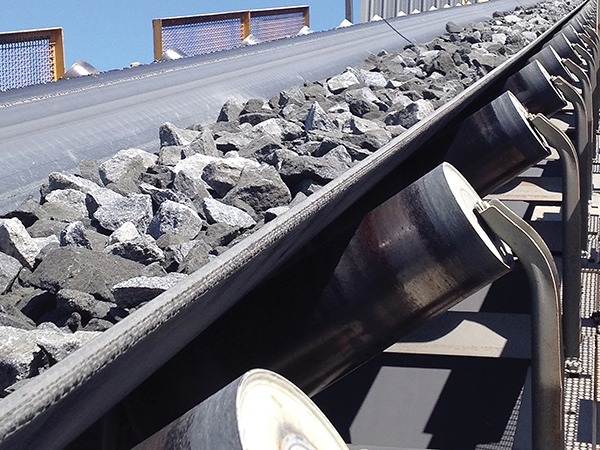Views: 99 Author: Site Editor Publish Time: 2024-01-29 Origin: Site









Conveyor belts are crucial components in various industries, facilitating the smooth movement of goods and materials. Ensuring the proper functioning of conveyor belts is vital for the efficiency and productivity of operations. Preventive maintenance plays a pivotal role in prolonging the lifespan of conveyor belts and averting unexpected downtimes. Implementing a proactive maintenance strategy not only enhances operational reliability but also reduces the risk of costly repairs and replacements. Here are several tips for effective preventive maintenance of conveyor belts:
Regular Inspections: Conduct routine inspections of conveyor belts to identify potential issues before they escalate into major problems. Inspect the belt surface for signs of wear, tear, or damage. Check for misalignments, belt tension, and tracking issues. Regular inspections help in detecting abnormalities early, allowing prompt corrective actions.
Cleanliness Maintenance: Keep conveyor belts clean and free from debris, dust, and contaminants. Accumulated debris can cause premature wear and tear, leading to belt damage and operational disruptions. Implement a scheduled cleaning regimen using appropriate cleaning agents and methods suitable for the belt material.
Lubrication: Proper lubrication of conveyor components such as pulleys, bearings, and chains is essential for smooth operation and reduced friction. Lubricants help prevent corrosion, reduce wear, and extend the lifespan of moving parts. Follow manufacturer guidelines for the type and frequency of lubrication required for different components.
Tightening and Alignment: Maintain proper belt tension and alignment to prevent slippage, excessive wear, and premature failure. Periodically check and adjust the tensioning mechanisms to ensure optimal belt tension. Align pulleys and rollers correctly to prevent uneven loading and stress on the belt.
Temperature and Environment Control: Monitor temperature and environmental conditions in the vicinity of conveyor belts. Extreme temperatures, humidity, and exposure to harsh elements can accelerate belt deterioration and compromise performance. Install appropriate ventilation, heating, or cooling systems to maintain favorable operating conditions.
Training and Education: Provide training to personnel responsible for conveyor belt maintenance. Equip them with the necessary knowledge and skills to identify maintenance requirements, troubleshoot issues, and perform preventive tasks effectively. Encourage proactive communication and reporting of maintenance observations and concerns.
Spare Parts Inventory: Maintain an inventory of essential spare parts and components to facilitate timely repairs and replacements. Stock commonly used items such as belts, rollers, bearings, and fasteners to minimize downtime in case of unexpected failures. Regularly review and update the spare parts inventory based on usage patterns and equipment requirements.
Monitoring and Performance Tracking: Implement a system for monitoring conveyor belt performance and tracking maintenance activities. Utilize technologies such as sensors, monitoring software, and predictive analytics to assess belt condition, track maintenance schedules, and predict potential failures. Real-time monitoring enables proactive intervention and decision-making to prevent operational disruptions.
Documentation and Record-Keeping: Maintain comprehensive documentation of maintenance activities, inspections, repairs, and replacements. Keep detailed records of belt specifications, maintenance schedules, and historical performance data. Analyze maintenance records to identify trends, patterns, and areas for improvement in the preventive maintenance program.
Continuous Improvement: Foster a culture of continuous improvement in conveyor belt maintenance practices. Encourage feedback from maintenance personnel and stakeholders to identify opportunities for enhancing efficiency, reliability, and safety. Regularly review and refine preventive maintenance procedures based on lessons learned and industry best practices.
In conclusion, effective preventive maintenance is essential for maximizing the lifespan, reliability, and performance of conveyor belts. By implementing proactive maintenance strategies, conducting regular inspections, addressing issues promptly, and leveraging technology and best practices, organizations can minimize downtime, optimize operational efficiency, and ensure the seamless functioning of conveyor systems. Investing in preventive maintenance not only protects valuable assets but also contributes to overall productivity and competitiveness in today's dynamic industrial landscape.
content is empty!
